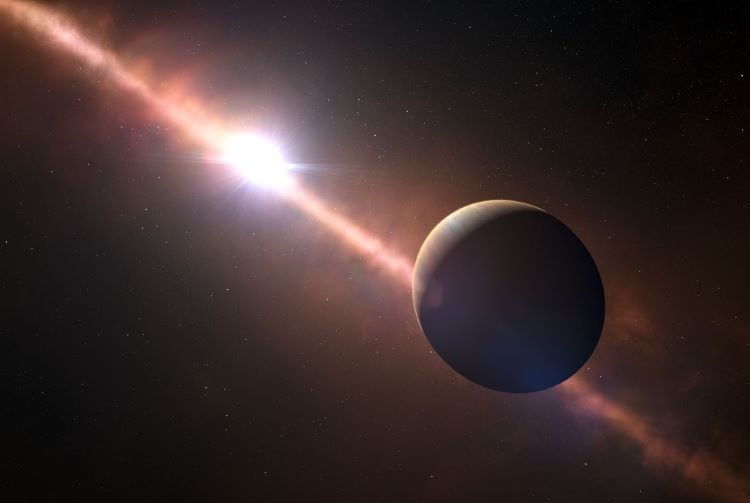Searching for exoplanets is incredibly difficult given their literal astronomical distances from Earth, which is why a myriad of methods have been created to find them. These include transit, redial velocity, astrometry, gravitational microlensing, and direct imaging. It is this last method that was used to recently create a time-lapse video that compresses a mind-blowing 17 years of the partial orbit of exoplanet, Beta Pictoris b, into 10 seconds. The data to create the video was collected between 2003 and 2020, it encompasses approximately 75 percent of the total orbit, and marks the longest time-lapse video of an exoplanet ever produced.
"We need another six years of data before we can see one whole orbit," said Dr. Jason Wang, who is an assistant professor in the Department of Physics and Astronomy at Northwestern and led the work behind the incredible video. "We're almost there. Patience is key." During the video, Beta Pictoris b can be seen passing both in front of and behind its star, as we are viewing it almost completely edge-on.
Beta Pictoris b, which was first imaged in 2003 and discovery confirmed in 2008, is located approximately 64 light-years from Earth, just under 12 times as massive as Jupiter, and orbits its parent star, Beta Pictoris, at approximately 10 astronomical units (AU) with an approximate orbital period of 23.6 years. For context, Saturn orbits just over 9.5 AU from our Sun with an orbital period of 29.5 years. Beta Pictoris is estimated to possess 1.75 times the mass of our Sun and its luminosity is 8.7 times greater. Despite being larger and more luminous, Beta Pictoris is only between 20 to 26 million years old, which is a fraction of our Sun's age at 4.6 billion years old. Given the star's young age, the presence of Beta Pictoris b means gaseous exoplanets are able to form in only a few million years.
To create the seamless video, Dr. Wang recruited New Trier High School student, Malachi Noel, to process archival imaging data collected from three telescope instruments, two at the European Southern Observatory and one at the Gemini Observatory in Hawai'i. This involved using artificial intelligence (AI)-driven methods to first evenly analyze the data followed by evenly processing it, and Dr. Wang stepped in to fill in the gaps through an algorithmic method known as motion interpolation.
"Due to the long time-range, there was a lot of diversity among the datasets, which required frequent adaptations to the image processing," said Noel. "I really enjoyed working with the data. While it is too early to know for sure, astrophysics is definitely a career path I am seriously considering."
Assembling the video was accomplished by Dr. Wang using " adaptive optics " to fix image blurring produced by the Earth's atmosphere. Finally, Dr. Wang blocked out the glare of Beta Pictoris using specialized instrumentation with the final product being a seamless, 11-second video showing 17 years of the partial orbit of Beta Pictoris b.
This video marks the third such time-lapse video that Dr. Wang has produced of Beta Pictoris b, with previous videos coming in
 Universe Today
Universe Today
